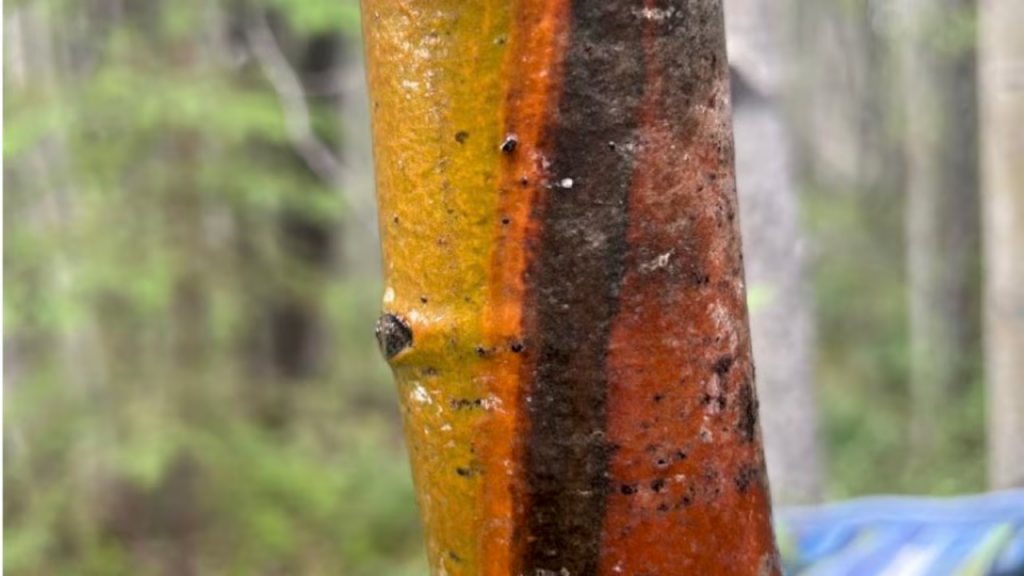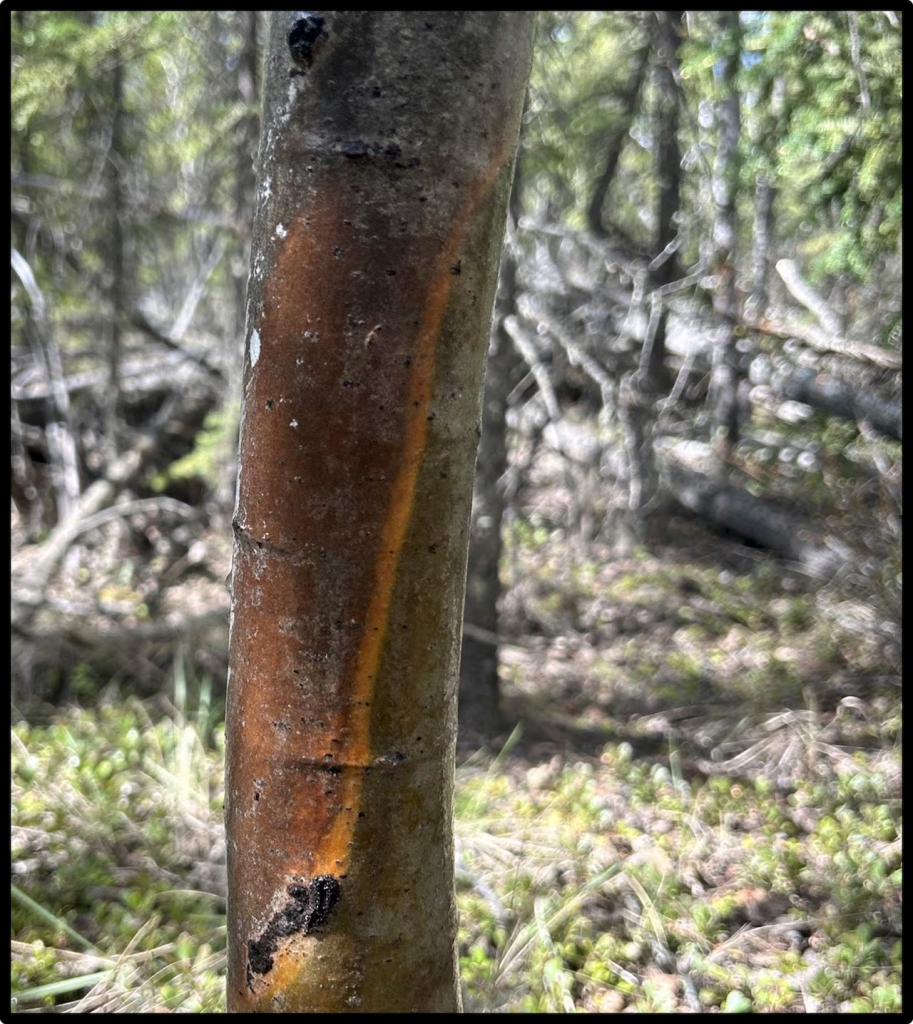Aggressive’ tree disease discovered in N.W.T. aspens

Researcher who helped discover disease in N.W.T. says it’s worth watching but not ‘an imminent threat’
A new disease affecting aspen trees has been discovered in the N.W.T.
The first case of aspen running canker in the territory was confirmed by field crews from Wilfrid Laurier University and the N.W.T. Forest Health surveys last year.
Aspen running canker is an orange “yeasty fungal pathogen” that moves vertically through aspen trees forming cankers and killing tissues, said Jennifer Baltzer, a professor and Canada Research Chair in Forests and Global Change at Wilfrid Laurier University. She was also part of the research team that discovered the tree disease in the N.W.T.
As the disease infects the host, the cankers expand to the full circumference of the tree, killing live tissue and blocking water and nutrients from moving up and down. Without these essential elements, the tree dies.
With an 80 per cent mortality rate, death can occur as quickly as three months after a tree has been infected, Baltzer said.
This disease is relatively new to researchers. The first documented discovery was about 10 years ago in Alaska and then in the Yukon in 2023.
While the full extent to which the pathogen is affecting N.W.T.’s forests isn’t yet known, it appears to be less pervasive in the N.W.T. compared to that of Alaska or the Yukon, said Baltzer.

There are currently three locations in the territory with known infections: along Highway 3 near Hay River and on either side of the Great Slave Lake.
In its latest forest health report, the N.W.T. department of Environment and Climate Change classified aspen running canker as “an aggressive, fast-spreading disease.”
Baltzer said that while the disease is an emerging threat, it isn’t widespread in the territory yet and shouldn’t be something people need to be too worried about.
“We know it’s here. It’s something to watch and something to keep our eyes on, but not something that is an imminent threat to the aspen stands in this region,” she said.
How the disease might spread
Not much is known about what has caused aspen running canker to appear in the N.W.T. or even how it is transmitted from one tree to another.
Baltzer said there could be a few different reasons the disease has begun to crop up in the territory’s forests.
Wind, wildfire smoke or even insects could be potential vehicles carrying bacteria from one aspen to another, she said. But these aren’t the only possible culprits.
Certain environmental stressors can leave trees susceptible to disease, similar to how a high degree of stress makes a person more susceptible to a cold or flu, Baltzer said.
Areas in the N.W.T., especially in the South Slave, North Slave and Dehcho regions have been facing severe and extreme drought since the summer of 2022, according to the territory’s forest health report.
These hot and dry conditions could have changed the way the pathogen functioned and be one explanation for the emergence of this new disease.
“[The fungus] can have very little impact and then all of a sudden be a problem for trees when conditions are very stressful,” Baltzer said.
The role of aspen in fire mitigation
One prevalent concern that materializes when discussing aspen running canker is its affect on future wildfire prevention.
Aspen trees are often characterized as less flammable with much lower fire behaviour than other species like conifers or spruce, wrote Mike Westwick, the N.W.T. ‘s wildfire prevention and mitigation manager, in an email to the CBC News.

In the Yukon, aspens have been planted around the city of Whitehorse in an effort to create a fire break. The low-burning trees act as a barrier against the flames.
In the N.W.T., aspen is a “significant consideration” in how N.W.T. fire assesses the threat from a wildfire, said Westwick, who indicated they will be “watching this issue closely.”
Baltzer said that since aspen doesn’t burn as well as other trees, it can be used to help slow down the fire cycle. But now, the emergence of aspen running canker has provided a bit of a “plot twist.”
“It gives us a little less certainty in terms of what those future paths might look like for boreal forests in the face of changing wildfires,” she said.
Tests to learn more about aspen running canker are currently underway in Waterloo.
Related stories from around the North:
Canada: Reforestation project in N.W.T. presses on,1.5 million trees planted near Behchokǫ̀, CBC News
Finland: Finnish government buys naturally diverse historical island from forestry giant, Yle News
Sweden: Ancient Swedish forests cut down at fast pace, Radio Sweden



